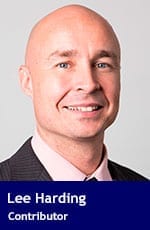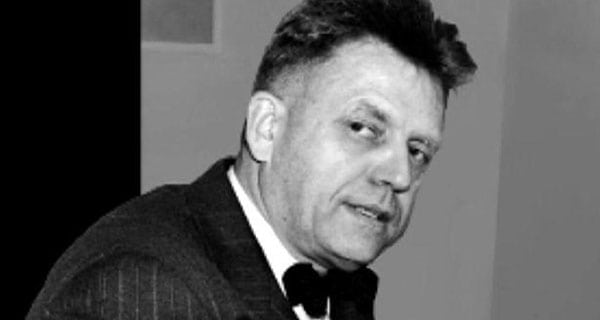 TV personality Phil Donahue once said, “Kinsey was to sexuality what Freud was to psychiatry, what Madame Curie was to radiation, what Einstein was to physics.”
TV personality Phil Donahue once said, “Kinsey was to sexuality what Freud was to psychiatry, what Madame Curie was to radiation, what Einstein was to physics.”
Alfred Kinsey was the person primarily responsible for turning western society from Christian sexual morals to amoral behaviour more in line with his tastes.
Biographer James H. Jones believes that when self-control eluded Kinsey, he abandoned Christianity and its restraints and tried to take society with him.
Kinsey was a zoologist by training who taught at the University of Indiana. He was inspired by Dr. Robert Dickinson to begin sexuality studies in 1938. Dickinson, a gynecologist and author of A Thousand Marriages (1931), was invited by Kinsey to lecture at the university in 1940. In 1941, Kinsey published Homosexuality: Criteria for a Hormonal Explanation of the Homosexual, where he advocated that homosexuality was normal and insisted that homosexuality and heterosexuality were not “mutually exclusive.”
For the landmark studies he would later conduct, he chose, then groomed a team that practised wife-swapping, had their sex acts filmed, and included homosexual contacts for both professional and private needs. Biographer James Jones confirmed that Kinsey enjoyed sadomasochism.
The Rockefeller Foundation began funding Kinsey in 1941. They ensured the public knew him well, but only as a reputable researcher and married father with church-going children. Wardell Pomeroy, who co-authored his studies and later wrote a biography on Kinsey, repeatedly referred to their mutual work as a “grand scheme.” Indeed, Kinsey’s ‘findings’ echoed the assertions Karl-Maria Kertbeny had made in 1868 – and for the same reasons. Both claimed that those in the mainstream of society practised many sexual taboos. Therefore, people needed to change their hypocritical attitudes and laws against such taboos.
In his landmark 1948 book, Sexual Behavior of the Human Male (also known as the Male Report), Kinsey said 95 per cent of American men did acts that violated sex-crimes laws.
Such findings were starkly different from America’s self-perception and reality.
It took decades to fully expose the deep and systemic problems with the studies. Even if the data had been accurately collected, it still would have suffered the problem of volunteer bias.
The American Statistical Association was pressured to favourably review the Male Report, yet also expressed deep concerns: “In the case of homosexuality, we are chiefly concerned about possible bias in the sample. … Critics are justified in their objections that many of the most … provocative statements in the book are not based on the data presented therein, and it is not made clear to the reader on what evidence the statements are based.”
Statistician Paul Sheatsley and sociologist Herbert Hyman wrote in An Analysis of the Kinsey Reports (1954) that “no one could tell how good or bad his sample actually was because nowhere was there any systematic account of the distribution of the 5,300 males in terms of such factors as age, religion, etc.”
The criticisms made the Kinsey team somewhat more careful in its 1953 sequel, The Sexual Behavior of the Human Female. That’s why social scientist Amram Scheinfeld could give its biased claims a more balanced treatment in a September 1953 article in Cosmopolitan.
But many women sampled for the study included “burlesque performers” and “taxi dancers.” Its definition for “married” included any woman who lived with a man in a relationship for at least a year. It suggested 10 per cent of sexually-active single, white, pre-nuptial, or adulterous women got pregnant. But it did not even mention married mothers.
The full level of the illegitimacy of such studies was veiled for decades until Dr. Judith Reisman of the University of Haifa began her own investigations. She published a paper, The Scientist as A Contributing Agent To Child Sexual Abuse; A Preliminary Consideration of Possible Ethics Violations, that earned her an audience at the Fifth World Congress of Sexology on July 23, 1981.
Reisman encountered substantial professional resistance regarding her attacks on the legitimacy of the Kinsey studies. In her determination, she authored four books on Kinsey. The Lancet reported on March 2, 1991 on the first of these books: “[T]he important allegations from the scientific viewpoint are imperfections in the (Kinsey) sample and unethical, possibly criminal, observations on children. … Dr. Judith A. Reisman and her colleagues demolish the foundations of the two (Kinsey) reports.”
The Kinsey study was used to great effect in future years. Society’s sexual practices grew closer to those reflected in the studies. Legal penalties against sexual taboos were relaxed or rescinded. Homosexuality was removed from the American Psychiatric Association’s list of mental disorders in 1973. Sexual studies departments developed in universities, followed by sex education in high schools.
By the time Reisman’s revelations were made, many didn’t want to believe them. Reisman’s findings were an inconvenient truth. They preferred fraudulent evidence to back social change than scientific integrity that could stand in its way.
Lee Harding is research fellow for the Frontier Centre for Public Policy.
The views, opinions and positions expressed by columnists and contributors are the author’s alone. They do not inherently or expressly reflect the views, opinions and/or positions of our publication.

